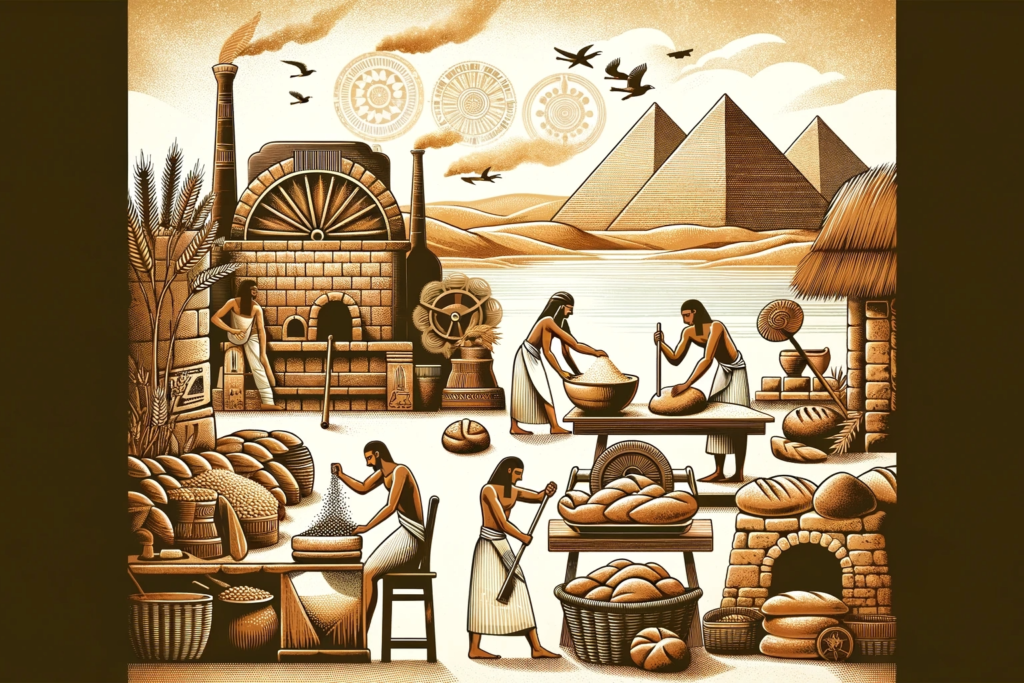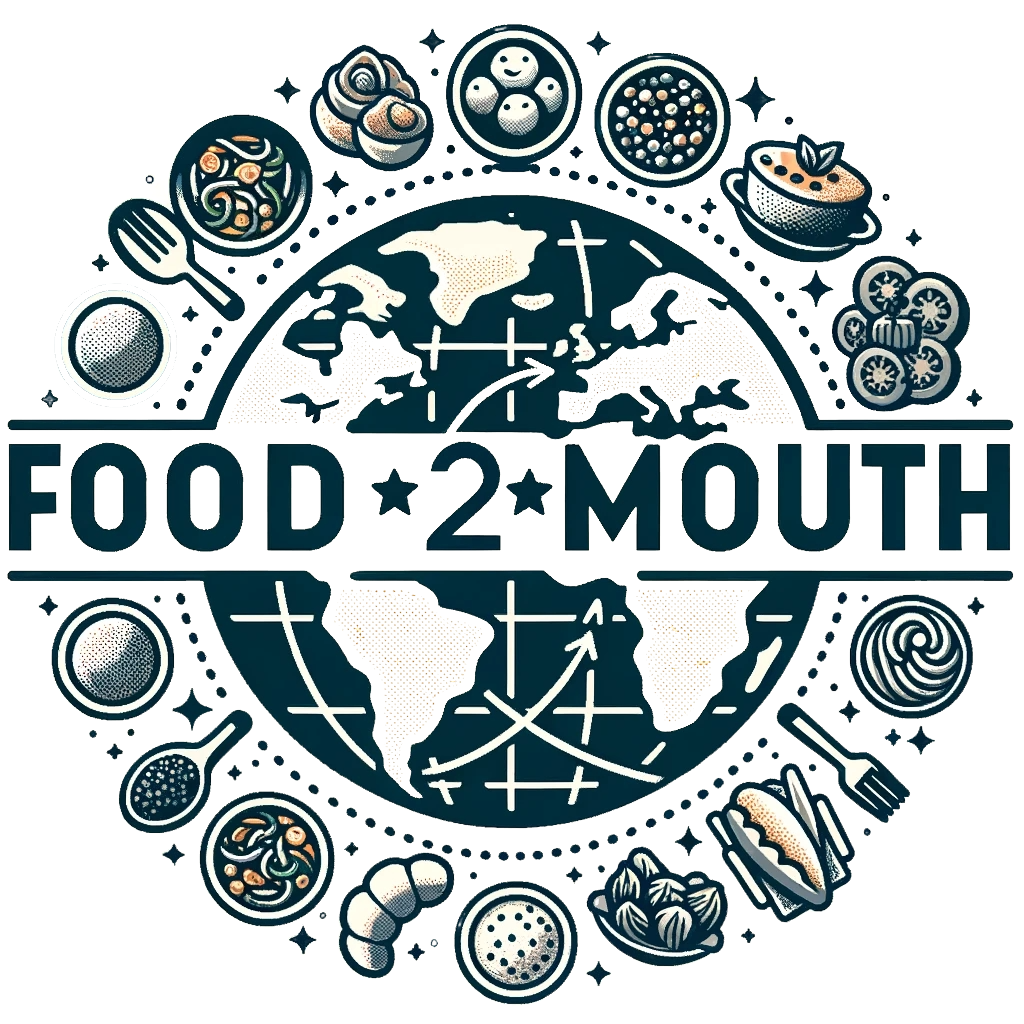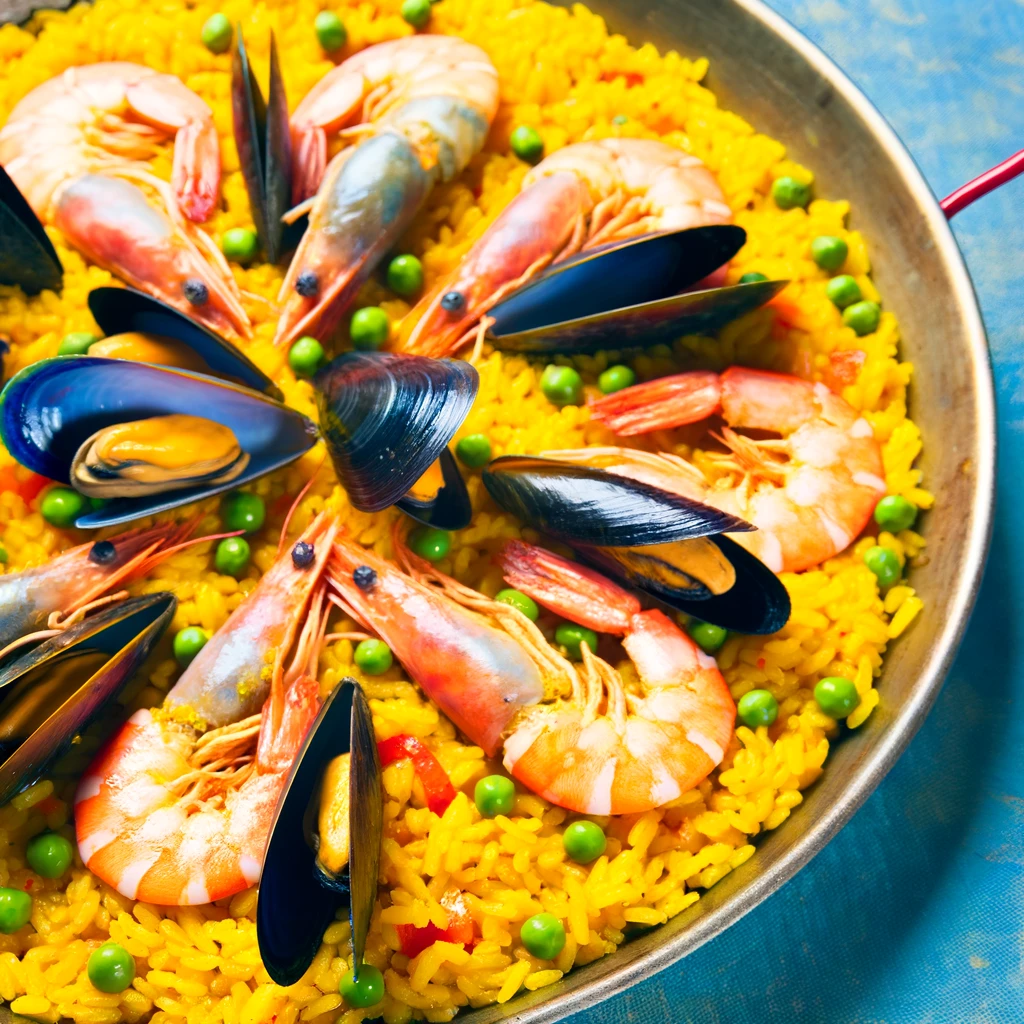Introduction to Bread Making History and Traditions
Bread, often referred to as the staff of life, holds a place of significance in many cultures across the globe. From the ancient Egyptians to modern-day bakers, the art of bread making has evolved, reflecting the history and traditions of different civilizations.

Bread, in its myriad forms, has been the cornerstone of nutrition and a symbol of civilisation from time immemorial. Its humble origins trace back to the earliest agrarian societies, where the cultivation of grains signified the transition from nomadic to settled life. In ancient Egypt, bread not only sustained the living but also accompanied the dead as a provision for the afterlife, illustrating its deep cultural and spiritual significance. Across the Mediterranean, the Greeks and Romans honed the art of bread-making, with Roman legions marching on rations of hardtack.
Moving into the Middle Ages, bread solidified its status as a societal equalizer—consumed by peasant and king alike, differing only in quality and refinement. By the time of the Industrial Revolution, advancements in milling and baking technology transformed bread production, cementing its role as a global dietary mainstay.
Today, bread transcends cultures, with each region imparting its own flavours and techniques, from the fluffy naan in India to the crusty baguette in France. This culinary staple, steeped in history, not only nourishes but also tells a tale of human innovation and cultural exchange. As we break bread together, we partake in a tradition that is as old as civilisation itself, a universal act that underscores our shared humanity.
The Basics of Bread Making
Understanding the fundamentals of bread making is essential for appreciating the diversity of breads. Bread comes to life through a simple yet remarkable process, starting with four key ingredients: flour, water, yeast, and salt. Flour brings structure, with its proteins binding to water to form gluten, which stretches and traps air. Then, yeast jumps into action, eating the sugars and burping out carbon dioxide, causing the dough to puff up. Salt steps in, not just for taste, but to keep the yeast in check and help the gluten hold strong. As the dough bakes, the heat makes the yeast work faster, inflating the bread until the yeast dies and the bread sets. This process, from mixing to baking, weaves together the flavours and textures we love in a fresh loaf of bread.
Popular Types of Bread
Around the globe, you’ll find white bread in many kitchens, loved for its softness and gentle taste. On the other side, whole wheat bread stands out, made with whole grain flour that’s rich in fiber for a healthier bite. Each bread type has its own story, perfectly fitting into the food traditions of various cultures. White bread often graces breakfast tables, while whole wheat might accompany a hearty stew. These breads not only fill our plates but also reflect our diverse ways of eating and living.
Specialty Breads Around the World
Bread is not just a food item; it’s a reflection of culture and tradition. Embark on a captivating culinary journey, exploring the world’s diverse bread traditions. Start in the charming bakeries of France, where the iconic baguette reigns supreme. This slender loaf, known for its golden, crispy crust and fluffy interior, is a testament to simplicity and precision in baking. Flour, water, yeast, and a touch of salt come together, with the dough often left to rise overnight, developing its distinctive flavour.
Venture next to Italy, where ciabatta offers a rustic contrast. Originating as a response to the popularity of the French baguette, ciabatta boasts a moist, porous texture, perfect for soaking up olive oil and vinegar. Its high hydration dough, enriched with olive oil, creates an alluring chewiness, making it ideal for sandwiches or as an accompaniment to soups.
Travel further to the Indian subcontinent, where naan tells a story of culinary versatility. This soft, pillowy bread is made from maida flour, similar to all-purpose flour, mixed with a little yogurt, milk, and baking powder to achieve its tender crumb. Traditionally baked
in a tandoor oven, naan puffs up quickly, developing a delightful char and a smoky flavour. Often brushed with ghee or butter, it’s a staple accompaniment to many Indian dishes, from rich curries to grilled meats.
These breads, each with their unique origins and methods of preparation, are more than just staples; they are a window into the cultural and historical landscapes of their respective countries. They remind us how a simple mixture of basic ingredients can, with the right techniques and traditions, transform into an array of flavours and textures that define and enrich the global culinary experience.
Gluten-Free Options in Breads
The growing awareness of gluten sensitivity and celiac disease has led to a surge in the popularity of gluten-free breads. These breads are crafted without traditional wheat, barley, or rye flours, which contain gluten, a protein that causes adverse reactions in some people. Instead, bakers use alternative flours like rice, almond, coconut, or even potato and tapioca flours to create a similar texture and taste.
One of the biggest challenges in making gluten-free bread is replicating the elasticity and fluffiness that gluten provides in regular bread. To overcome this, binders such as xanthan gum, guar gum, or eggs are used. These ingredients help to mimic the binding properties of gluten, providing structure to the bread. Additionally, bakers often incorporate ingredients like apple cider vinegar or baking soda to help the dough rise and achieve a lighter texture.
Among the popular gluten-free bread varieties, rice bread stands out for its soft, subtle flavour, making it a versatile choice for sandwiches. Almond bread, with its rich, nutty flavour, is another favourite, often preferred for its higher protein content and nutritional value. Buckwheat bread, despite its name, is actually gluten-free and prized for its robust flavour and hearty texture.
These gluten-free breads offer not only safe options for those with dietary restrictions but also introduce a variety of new, flavourful alternatives to traditional bread. They exemplify how dietary needs can lead to culinary innovation, expanding the horizons of baking and offering delicious solutions for everyone.
Sweet Breads and Pastries
Bread isn’t just about the savoury; it also ventures into the sweet and indulgent world of pastries. Take brioche, a classic French creation, rich with butter and eggs, offering a soft, tender crumb and a golden crust. Its origins trace back to the old French tradition of rich, egg-based breads, making it a luxurious treat. Then there’s the croissant, a symbol of French patisserie, with its flaky, layered texture. Creating the perfect croissant is an art, involving meticulous layering of dough and butter, then rolling and folding repeatedly to achieve those delicate, buttery layers. Both brioche and croissants are more than just treats; they’re a celebration of fine ingredients and time-honored baking techniques. To dive deeper into this delicious world, explore “The Art of French Pastry,” which delves into the history and nuances of these confectionery marvels.
Bread as a Dietary Staple
Bread, often seen as just a simple staple, is actually a significant contributor to our daily nutrition. Each variety, from whole grain to sourdough, brings its own set of health benefits. Whole grain breads, for example, are a fantastic source of dietary fiber, crucial for maintaining digestive health and preventing chronic diseases such as diabetes and heart disease. They’re also rich in essential nutrients like B vitamins, which play a vital role in energy metabolism, and minerals like iron and magnesium.
Sourdough bread, with its distinctive fermentation process, not only offers a unique tangy flavour but also health benefits. The fermentation helps break down some of the gluten, making it potentially easier to digest for those with mild gluten sensitivities. Moreover, the lactic acid bacteria present in sourdough can be beneficial for gut health.
Rye bread, another popular choice, is packed with fiber and has been linked to improved blood sugar control. This makes it an excellent option for those looking to maintain a healthy weight or manage conditions like type 2 diabetes.
Bread also plays a crucial role in various dietary patterns. Athletes, for example, may rely on high-carbohydrate breads for energy, while others might choose lighter, low-calorie options as part of a weight management plan.
Incorporating bread into a balanced diet can contribute significantly to overall health. To learn more about maintaining a balanced diet and the importance of nutrition in recovery from injuries, such as bone fractures, visit PostFracture.com, a resource dedicated to post-injury nutrition and recovery strategies. This comprehensive view of bread underscores its importance not just as a dietary staple, but as a versatile, nutritious food that can cater to a wide range of health needs and preferences.
The Role of Breads in Festivals and Celebrations
Bread transcends mere sustenance, becoming a symbol of celebration and tradition in many cultures worldwide. Take, for instance, the German Christmas stollen, a rich, fruit-laden bread dusted with powdered sugar, symbolising the winter snow. Originating from Dresden, stollen is more than just a festive treat; it’s a centrepiece of the German Christmas tradition, with families gathering to enjoy this sweet, dense bread during Advent. The recipe, rich in dried fruits, nuts, and spices, encapsulates the spirit of the season. For a taste of this tradition, you can explore traditional stollen recipes here.
Similarly, the Jewish challah bread holds deep religious significance, especially during Shabbat and major Jewish holidays. This beautifully braided bread, often enriched with eggs, is more than just a delicious loaf; it’s a symbol of God’s provision to the Israelites in the desert. The act of separating and blessing the challah is a key ritual in Jewish households, marking the beginning of the Sabbath meal. Challah’s rich, slightly sweet flavour and soft, fluffy texture make it a beloved staple, and its preparation is often a cherished family tradition. Discover the art of baking challah with traditional recipes here.
In these festive occasions, bread like stollen and challah become more than food; they are carriers of history, tradition, and communal bonds. As families and communities come together to bake and share these breads, they reaffirm cultural identities and celebrate the enduring power of shared meals and traditions.
Pairing Breads with Meals
Selecting the right bread can truly elevate a meal. For hearty stews or soups, a thick, crusty bread like a baguette or sourdough is ideal. These breads absorb the flavours beautifully without falling apart. On the other hand, for lighter meals like salads, opt for a softer bread, like focaccia or ciabatta. These add a delightful texture without overpowering the dish.
When it comes to fine dining, a delicate, buttery brioche complements rich, creamy dishes perfectly. For spicy cuisines, such as Indian or Middle Eastern, flatbreads like naan or pita are perfect. They’re great for scooping up sauces and balancing intense flavours.
For Italian meals, nothing beats a classic garlic bread or a crusty ciabatta, ideal for dipping in olive oil or pasta sauces. And when serving cheese, a variety of breads, from nutty whole grain to fruity raisin bread, can enhance the cheese’s flavours.
In summary, the right bread not only complements the main dish but also adds an extra layer of texture and flavour, making the meal more enjoyable and complete.
Storing and Preserving Bread
Storing bread properly is crucial for keeping it fresh and flavourful. For store-bought breads, the pantry is usually the best spot. Keep them in their original packaging to retain moisture and softness. However, artisanal or homemade breads fare better in a bread box or a paper bag. This allows them to breathe, preventing mold and maintaining crust texture.
If you won’t eat the bread within a few days, consider freezing it. Freeze it sliced for easy access. To thaw, just take out the needed slices and toast them directly from the freezer. This method preserves the bread’s quality and extends its life significantly.
Avoid refrigerating bread, as it speeds up the staling process. For breads like baguettes, which are best enjoyed fresh, consume them within a day or two. For longer-lasting options like rye or whole grain, you can expect a shelf life of about a week when stored properly.
In essence, different breads require different storage methods. By following these tips, you can enjoy your bread at its best for as long as possible.
Homemade Bread Making
Baking bread at home is not only rewarding, but also an enjoyable way to create something delicious and healthy. For beginners, starting with a basic bread recipe is key. A simple white or whole wheat loaf requires just a few ingredients: flour, water, yeast, and salt.
First, focus on understanding yeast. It’s the heart of bread making, responsible for the rise and texture of your loaf. Make sure your yeast is fresh and learn to proof it correctly – it should become frothy when mixed with warm water. This indicates it’s active and ready to use.
When mixing your dough, start with the flour and salt, then add the yeast mixture. Knead the dough until it’s smooth and elastic – this develops the gluten, giving your bread structure. Don’t rush this step; it’s crucial for a good loaf.
Letting the dough rise is next. This should be done in a warm, draft-free area. Patience is key here; the dough should double in size, which can take anywhere from one to two hours.
Once risen, punch the dough down gently and shape it into a loaf. Let it rise again until it’s puffy. This second rise is important for the bread’s final texture.
Baking temperature and time are crucial. Most breads bake well at around 350-375°F (175-190°C), but always check the recipe. A good indicator of doneness is the bread’s internal temperature, which should be around 190-200°F (88-93°C).
If you encounter common challenges like dense bread, it could be due to over-kneading or not enough rising time. If the crust is too hard, try covering the bread with foil during part of the baking time.
For detailed recipes and more tips, check out beginner-friendly bread-making websites or cookbooks. With practice and patience, you’ll be baking perfect loaves in no time. Remember, bread making is as much an art as it is a science – each loaf you bake will teach you something new!
Book Recommendations and external links:
- “Flour Water Salt Yeast” by Ken Forkish – This book is excellent for beginners and offers in-depth knowledge about bread-making techniques.
- “The Bread Baker’s Apprentice” by Peter Reinhart – A comprehensive guide that covers a wide range of bread types and techniques, suitable for both beginners and experienced bakers.
- King Arthur Baking Company’s website (kingarthurbaking.com) – Offers a wealth of recipes and tips for bakers at all skill levels.
- “Baking School: The Bread Ahead Cookbook” by Matthew Jones – Provides straightforward, easy-to-follow recipes and is particularly good for home bakers.
Conclusion: The Enduring Legacy of Bread
In conclusion, bread stands as a testament to the enduring relationship between food and human history and culture. From its humble beginnings in the dawn of agriculture to its role in modern cuisines worldwide, bread has been a symbol of sustenance, tradition, and shared communal experiences. Its evolution and adaptation across diverse cultures showcase the adaptability and innovation of humanity in the culinary realm.
The importance of bread extends far beyond its role as a source of nourishment. It embodies the essence of cultural heritage, religious symbolism, and the cornerstone of countless celebrations and traditions. Whether it’s the comforting aroma of freshly baked loaves or the pleasure of breaking bread with loved ones, the emotional connection to bread is undeniable.
As we move into the future, the world of bread continues to evolve. Innovations in bread-making techniques, dietary preferences, and health-conscious choices will shape the bread of tomorrow. However, one thing remains certain: bread will endure as a fundamental and beloved food item, weaving itself into the fabric of our lives, just as it has for millennia. It will continue to symbolise not only our daily sustenance but also the rich tapestry of human history, culture, and our shared culinary heritage.
FAQs:
- What are the health benefits of whole wheat bread compared to white bread?
- How do gluten-free breads differ from traditional breads in terms of taste and texture?
- Can homemade bread be healthier than store-bought bread?
- What are some tips for storing bread to maintain its freshness?
- How has the process of bread making evolved over time?
- What role does bread play in different cultural celebrations and traditions?



